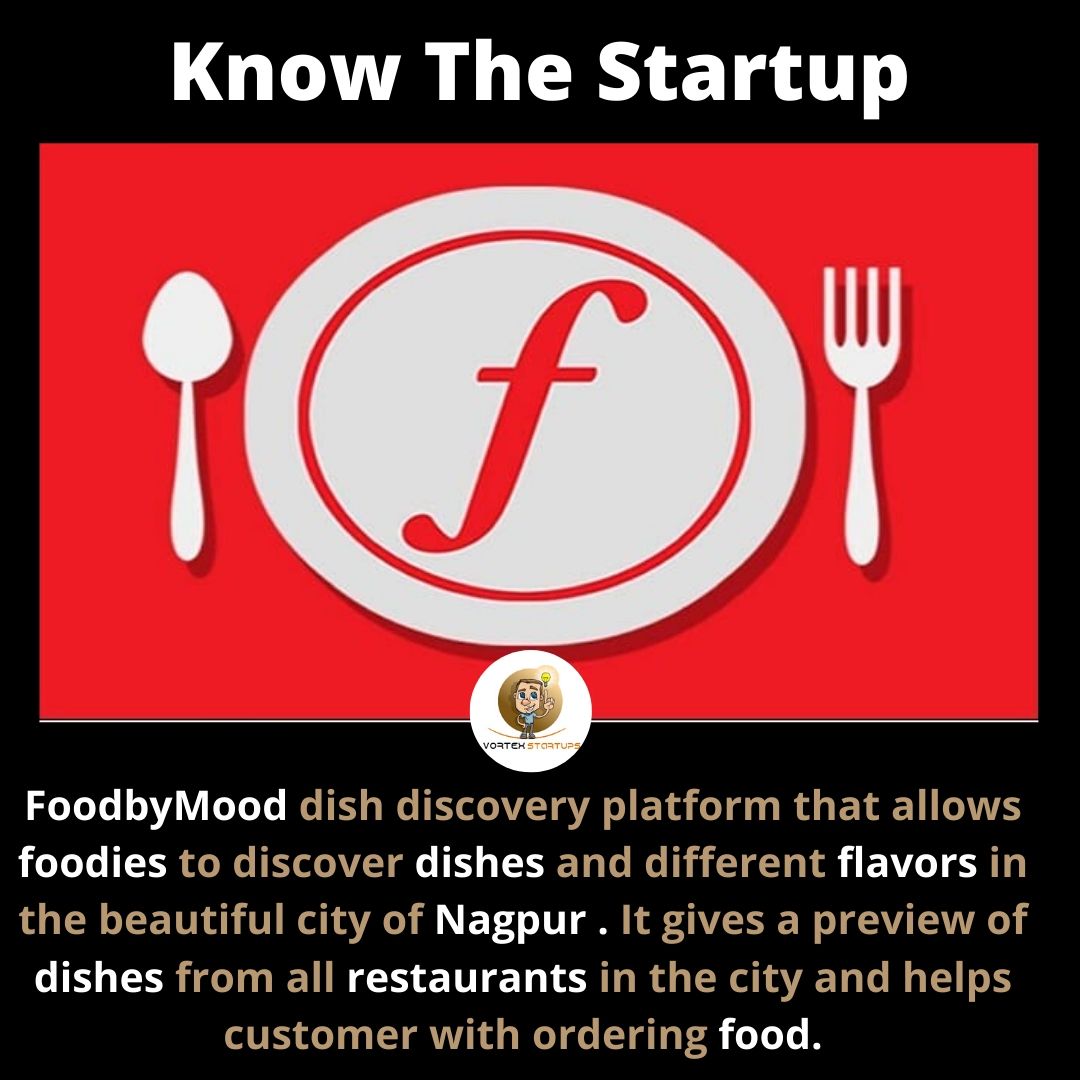Top 10 Promising and Scalable Startups in Nagpur 2022

Top 10 Promising and Scalable Startups in Nagpur 2022
Nagpur is the one place that has been providing the best level of opportunities in startups to organise the experiment and try most of the ideas. The city and the people have been given the best reach and network of the metro city with different types benefits of the 2-tier city.
First comes the cost of the benefit, which favours most aspiring entrepreneurs from the early stages of experimentation and real-life immersion of some of the ideas.
The city is the educational and commercial hub of Vidarbha, and it is considered an upcoming “smart city” of India.
The state government of Maharashtra has funded an incubation centre that brings many opportunities for technology and a large number of start-up enthusiasts in Nagpur.
There are around 395 tech start-ups in Nagpur, where most of the educational and commercial sectors have introduced a lot of start-ups over the years, and the year 2021 has witnessed this boom.

Most companies have placed their headquarters in the city and have witnessed some of the local events with people. Our country is famous for its rapid growth and the diverse ideas that have inspired many people to start their journey in different sectors with the most frugal innovation. The start-up system in Nagpur is very much hitting, and it is purely being developed and maintained by the investors.
Being the third-largest city of Maharashtra, Nagpur is a preeminent commercial centre or most of the enthusiastic kind of people who are introducing new technologies daily for most of the latest companies or business or organizations.
Many new companies have already started establishing their main base in the city, and they have been providing an amazing level of investment potential and the best quality of growth prospects.
NagpurTech has many kinds of companies giving the best products and services to people and gaining a lot of good reviews. Many industries or sectors are considered optimal options for starting a type of new business. Many coworking spaces are emerging because of the new age office destination in India.
Considered to be a modern kind of workspace, most of them are gaining popularity in many small and big companies or organizations in the city. In the past years, the coworking spaces in the city have risen at an amazing speed in the different areas, established with a large number of amenities, pleasing design.
The best kind of furniture and the most vibrant kind of community coworking space in the city which are equipped with the most extraordinary facilities that have been promoting the high level of engagement levels with the work that is done.
Coworking spaces in Nagpur are known to be ideal for Start-ups.
Before starting any other type of business or organization, the space needed for the company is one of the important points considered by the entrepreneurs or their founders or investors.
It is now becoming the new trend for establishing up the office with the most suitable kind of coworking space, making the start-up or business a lot different from others and fetching the best feedback from the audience. There are four types of coworking spaces that have been considered best for start-ups in the city.
- Working Avenue: The first kind of coworking space is a vibrant, innovative, and creative workspace that is ultimately an open type of coworking space in the city. It has the best quality of wooden floors with the most well-conceived kind of wall art. It is made beautiful with overall natural lighting that gives the complete ambience to the coworkers, increasing efficiency levels.
- Cube Space Business Center: Cube Space Business centre is a complete green coworking space, which is considered very popular because of its eco-friendly kind of interior design. It gives the most prime location in the city for the founders. It provides a good opportunity to host the most vibrant community for start-ups, freelancers, professionals, and other solopreneurs.
- Cowork Platter Coworking Space: Cowork Platter was launched in 2019, providing the most vibrant kind of coworking space that has been allowing the people to work admits with its well-conceived type of interiors, which are designed to maintain the level the concentration levels of the people.
- Strint Studio Coworking Space: It is a vibrant coworking space that is always needed and always equipped with an ambience that is full of colours and that even inspires their coworkers. During business hours, the meeting room with this coworking space is considered good for conducting most of the critical business meetings.
Below are some of the most important and popular kinds of start-ups running in the city, so let’s highlight some of the successful ones.
1. Kizora Software Pvt. Limited
It has been providing best services to all the small and big businesses in India and even overseas and has been known to be the best software provider in the city. The company runs with a professionally talented team in terms of giving the services in software that you can quickly understand, develop, and learn.
The company was founded by Rahul Tarnekar and Abhijeet Thakare, even the directors of the Kizore software private limited. It provides an advantage of some of the poor executions to their customers in the software development, support, maintenance, and technical documentation services.
The company was founded in 2012, and since then, it has been giving personalized software development along with the solution providers on the cloud platform.
It has the building software with the most scalable and reliable cloud solutions, data acquisition, which helps in acquiring the data from the different devices in the IoT verticals and even help analyze the data on the cloud platform. Next comes the data processing and analytics service, which has real-time data-processing its analysis and the high quality of the visualization.
The start-up works with the vision to maximize the cost-benefit to different companies working with them and even mixing all the number of experiences of their expert kind of advice for every kind of deliverable to maintain the name and quality of the company.
The company works with the mission to grow its presence in the software services across the different delivering services in the technology solutions. It makes use of the personalized and reusable software elements that have been developed in the house to fulfil the requirements of the business.
Company Overview
| Legal Name | Kizore Software Pvt Ltd. |
| Industries | Computer, Healthcare & Outsourcing |
| Founder(s) | Rahul Tanekar & Abhijeet Thakare |
| Founded Date | 2011 |
| Total Funding Amount | $100K |
| Investors | Funding |
2. FoodbyMood

It is an app that allows world-class foodies to see the best dishes and tastes the different flavours that they serve. It has the number of food items according to the likes of every one of their customers and even takes in mind the needs and requirements of all of them.
Customers can easily customize their dishes and even tell their team to add different flavours according to their taste. It already gives a preview of the words from other restaurants in the city and even helps the customers order the food.
Until now, the app has seen the most different kind of growth of more than 15% in profits. It is an app called the food discovery application and readily helps everyone explore the best delicacies. You can find with the thousands of reviews made by genuine kinds of customers, with the ratings and the photos of different dishes.
You can even have the must-try dishes recommended by some of the known food lovers who are regular to their app.
The team of FoodbyMood does not make a difference between the organized and the unorganized sectors, it’s all food, and it is yummy it was founded by Sangharakshak Neel. He is a graduate of the Indian Institute of Technology and has started this business to provide the best platform for all the food lovers out there.
Company Overview
| Legal Name | FoodbyMood Pvt Ltd |
| Industries | Food Delivery & Restaurants |
| Founder(s) | Dheeraj Maurya & Sangharashak Neel |
| Founded Date | 2014 |
| Total Funding Amount | NA |
| Investors | Acquired |
3. Lemon Ideas Innovations Pvt Ltd

Want the best kind of innovation? Then, the answer to this is Lemon Ideas Innovations which has been doing very satisfactory work on the different types of creation innovation and tries to push people on their different levels of an entrepreneurial journey through their numbers of academic projects.
The name was founded by Deepak Menaria, who has contributed a lot of his unique ideas of making the platform of this worth appreciated in people. The company has already nurtured and supported around 1000 entrepreneurs and different innovators to date and has continued expanding their roles and bringing more transitions to their initiative.
Till now, more than 50,000 have been created by Lemon Ideas Innovations’ platform, it engages different entrepreneurs and works on a mission of delivering “Innovation by Everyone”, and it has been a complete journey of madness, passion, and a single driving thought of converting the massive potential of ideas, aspirations and talent.
It brings major kinds of results in the form of innovations, different ventures and different job creation. Over the years, they have been giving the best services and have tried to provide the shape too much evolved and changed the company’s services.
Today, the start-up Lemon is called an enabled and self-sustaining ecosystem creation, nurturing and the growth of entrepreneurial groups or ventures through the best kind of innovation that is given to them.
One of the important contributions of this company includes the awareness of the building, training, mentoring and even the venture’s creation and acceleration of the ideas.
The ideas of the Lemon has been deeply engaging with the selective cohort of different ventures every year for the process of acceleration driven by most of the conscious experiences and the business principles with their main focus on the part of education and sustainability kind of domain.
Company Overview
| Legal Name | Lemon Ideas Innovation Pvt Ltd |
| Industries | Consumer Services |
| Founder | Deepak Menaria |
| Founded Date | 2013 |
| Total Funding Amount | NA |
| Investors | Acquired |
4. LiveNapt

Shubham Jadhav, the founder of LiveNapt, has always been there to manage all the internal workings of a business. This platform has created an online invoice manager for all customers in all of the corporate sectors because the company tends to claim that there are a lot of regular reimbursements from their accounts department.
The founder of this start-up had completed his studies in bachelor’s in the sectors of mining and engineering and always believed in creating the best-added value not just for his customers but keeping in mind the needs of his team members. Subhan Jhadav has always advocated for the rights and conditions for continuous development and learning.
The company was majorly founded to solve the problem of handling thousands of paper bills and convert them into the form of digital bills to make the process of reimbursement. The number of warranty claims is the best of all.
This Nagpur-based start-up creates the best kinds of invoice managers for all the corporate people and helps them avoid the loss of bills. Shubham started this journey because of his one experience, where he was in a mall and faced an issue, where he was struck of starting his own company on this own and providing the ease of bills to the people.
This start-up is unique because it saves the work of a specific customer in different segments and helps make the whole process relatively easy. They always target a large audience, with the benefits of being amazing services to the people.
Most of today’s apps are successfully made with the most freemium kind of based models. The total of the addressed market that the company has estimated in India is around the figures of 15,000 CR, INR, out of which the 181 CR is the total market that they have segmented.
Company Overview
| Legal Name | LiveNapt Solutions Pvt Ltd |
| Industries | Finacial Services |
| Founder(s) | Nachiket Dhande & Shubham Jadhav |
| Founded Date | 2017 |
| Total Funding Amount | Funding |
| Investors | Acquired |
5. Halidram Food International

One of the most popular and famous companies in the city, Haldiram, was established in 1937 in Bikaner, Rajasthan. Haldiram Foods International Private Limited is now based in the city of Nagpur and has been running with some of the leading players in the snack food industry.
Haldiran is called the “Star Export House” by the Directorate General of Foreign Trade, a department working under the Ministry of Commerce, Government of India.
The company overall manufactures over 400 products, and their product catalogue has various kinds of items according to all the specialities. It even includes the traditional namkeens, sweets, Indian sweets, western snacks, cookies, papads and pickles.
It has gained a lot of customers with its comprehensive spread business in most cities and has been making the most considerable growth with time. It even has the option of producing ready-to-eat food products.
It is classified as a non-government company and even registered at the Registrar of Companies. Directors of the company include Sushilkumar Shivkishan Agarwal, Srinivasrao Sambhashivrao Vinnokata, Kamalkumar Agarwal, Shivkisan, Rajendrakumar Agarwal Shivkisan.
The company is like, whether you like tea or coffee or you like Indian sweets or namkeens, Haldiram foods is the one destination for all your needs.
It even gives some of the best kinds of offers or discounts during different kinds of occasions or festivals. It gives the taste of all kinds of traditions and makes people believe in their best quality products.
Company Overview
| Legal Name | Haldiram International Foods Pvt Ltd. |
| Industries | Food Processing & Snack Food |
| Founder | Shivkishan Agarwal |
| Founded Date | 1937 |
| Total Funding Amount | NA |
| Investors | Acquired |
6. Khichadiwala
Khichadi is always called to be the prime example of healthy foods consumed in all of the homes, and it is always considered the best option whenever your stomach is not in a good situation. This company just wanted to uplift the whole idea of khichadi from a bland one to make it the favourite in the new Generation.
The khichadiwala is now emerging with the new flavours and new mixing and bringing modern flavours to the traditional dishes, making it more enjoyable and innovative for the people. The company has been taking around 120-130 orders daily and even serves their products at a very reasonable price.
Manish Khanchandani and Sagar Bhajani founded the company is known to be the founders of the Khichadiwala, believing in the process of foreign fast foods chains in India.
The company completely envisages becoming a different kind of name in the fast-food industry with their unique taste and different flavours involved with the best kind of experience you can get with their menus.
The concept of Khichadiwala was started from a medical brain, their friend Juhi Mallick. Due to the professional engagements, she could not join the company’s other founders in their amazing type of entrepreneur journey.
The company aims to make the khichadi a prevalent kind of fast food because it has no harmful preservatives, unlike the other company mixes a lot of harmful ones in their food, making it unhealthy for the people.
Company Overview
| Legal Name | Khichadiwala |
| Industries | Snack & Food Processing |
| Founder(s) | Manish Khanchandani & Sagar Bhajani |
| Founded Date | 2001 |
| Total Funding Amount | Funding |
| Investors | Acquired |
7. Tsecond Generation

Considered to be one of the top start-ups in Nagpur, Tsecond was founded in 2014, giving their services in the electronic manufacturing company. It has partnered with LocationGuru Solutions in Mumbai for its number of sales.
The company has been providing its LBS services for the telecom infrastructure companies and has made the best of the sales to date. The company is technically supported by Napino Auto Electronic Ltd, which is a leading manufacturer company of power and electronics and is known to be a leading company in Gurugram.
The company, Napino Auto Electronics, works with manufacturing the elements for several companies, including the well-known Hero and Honda. Second Generation has successfully developed E-funnel, a fuel monitoring system known because it is an IoT device. It is installed at the inlet of their fuel tanks to give real-time notifications of the fuel events. The company was founded by Sahil Gurucharan Chawla, who believed in their cause.
Company Overview
| Legal Name | Tsecond Generation Technology Pvt Ltd. |
| Industries | Electronics& Software |
| Founder | Sahil Chawla |
| Founded Date | 2014 |
| Total Funding Amount | $370K |
| Investors | Jai Shankar & John Janakiraman |
8. Bloom Consulting Services

The bloom consulting services was launched in 2014, which has the company’s presence in Singapore and is known to be called a software development company specializing in developing the different kinds of web applications and the number of mobile applications for other companies well.
Their mobile application is easily installed on the Ios, Andriod and window phones. The bloom has been working with a team of 50 in-house developers, designers and the number of advisors.
The company was founded by Manish Gidwani, who has extensive management experience and has done his Master’s from the University of Florida in Engineering management and has even completed his under-graduation.
Their services have given the best services and have even acquired some of the well-known customers attached to the company and their policies. Their consulting services are considered best for the people and have even given the best services.
Company Overview
| Legal Name | Bloom Consulting Services Pvt Ltd. |
| Industries | Consulting & Information Technology |
| Founder | Manish Gidwani |
| Founded Date | 2005 |
| Total Funding Amount | NA |
| Investors | Acquired |
9. Polo Rooms

Giving their best services in the travel industry has offered their best travel packages to their customers. It is a brand of premium budget hotels giving the best of experience to the travellers for a standardized accommodation for any time duration at the most cost-effective prices according to the people’s budget.
Whenever you are travelling outstation, people look for many places and want to get the best deals. Still, with this travel company, you don’t have to negotiate on pricing or pay for any additional day if you need a good hotel for just a few hours or have the early check-in or early check-out. Customers just need to book the micro-stays with the Polo Rooms, and then you can have the best experience.
Polo Rooms have been the best and popular in the travellers who avail the shirt and frequent kinds of stays with them. It gives their services to the small, medium and all different scales of businesses and provides the best of experience. The company was founded by Sudhanshu Jagdish Yardi and the Ameya Patil, who have contributed their experiences in the travel industry.
Company Overview
| Legal Name | Polo Rooms Private Ltd. |
| Industries | Hospitality, Hotel & Travel |
| Founder(s) | Ameya Patil & Sudhanshu Jagdish Yardi |
| Founded Date | 2015 |
| Total Funding Amount | NA |
| Investors | Acquired |
10. White Elephant Process Consulting Firm

It’s the most popular brand management company with marketing promotion and selling services. The company has been their expert choice to give their customers the best variety of services.
White Elephant Consulting Firm was established in 2012. Since then, it has focused on marketing techniques and search engine optimization with the consultation, Goggle analytics, digital marketing, implantation support, IT process consulting, and all the business improvement diagnosis.
The company was founded by Sangharakshita, who did his undergraduate and postgraduation studies at the University of Mumbai and provided many products and services in the IT industry. Get the most detailed kind of information on the different types of investments with the help of their firm and process the whole transition and implementation right from the design phase given by the company.
Company Overview
| Legal Name | White Elephant Process Consulting Firm Pvt Ltd. |
| Industries | IT Services |
| Founder | Sangharakshita |
| Founded Date | 2014 |
| Total Funding Amount | NA |
| Investors | Funding |
Maharashtra has been known to be the one city which has the most vibrant kind of ecosystem, with their total of 2,787 start-ups registered in the state, and this made them ranked in the top cities in terms of the number of start-ups registered with the Department For Promotion Of Industry And Internal Trade in the year 2018.
Nagpur was awarded the Smart City status in September 2016 and called to be a significant city in handling the operations in the commercial and logistics department because the city has undergone a tremendous amount of economic development and urbanization in the past few decades.
The city has attracted some of the well-known new emerging companies in recent years and has acquired the appreciation worldwide. According to the report by Oxford Economics in the year 2018, Nagpur is called one of the top 10 fastest growing cities in the world, showing a growth rate of 8.41%, which has been far better than the past percentages.
It is called a home city for many investors, incubators, and accelerators, along with the other ecosystem enablers.
The city works intending to bring more and more innovations and creation with the best kind of workplace to attract people from different parts of the world to reach them and collaborate with them.
The city is called the base for most venture capitalists who started different operations in the town just to unlock the hidden aspects of the entrepreneurial potential. It has been able to give a home to around 170 start-ups in recent times and has started to attain a lot of fame and recognition throughout the years and from other investors from other cities.
edited and proofread by nikita sharma






